Signals in most primary production sectors have improved in recent months, and in some this positivity is starting to flow through to the sale and purchase of rural property. For those sectors where this has not yet occurred, indications are that the market upswing will commence in the next few months.
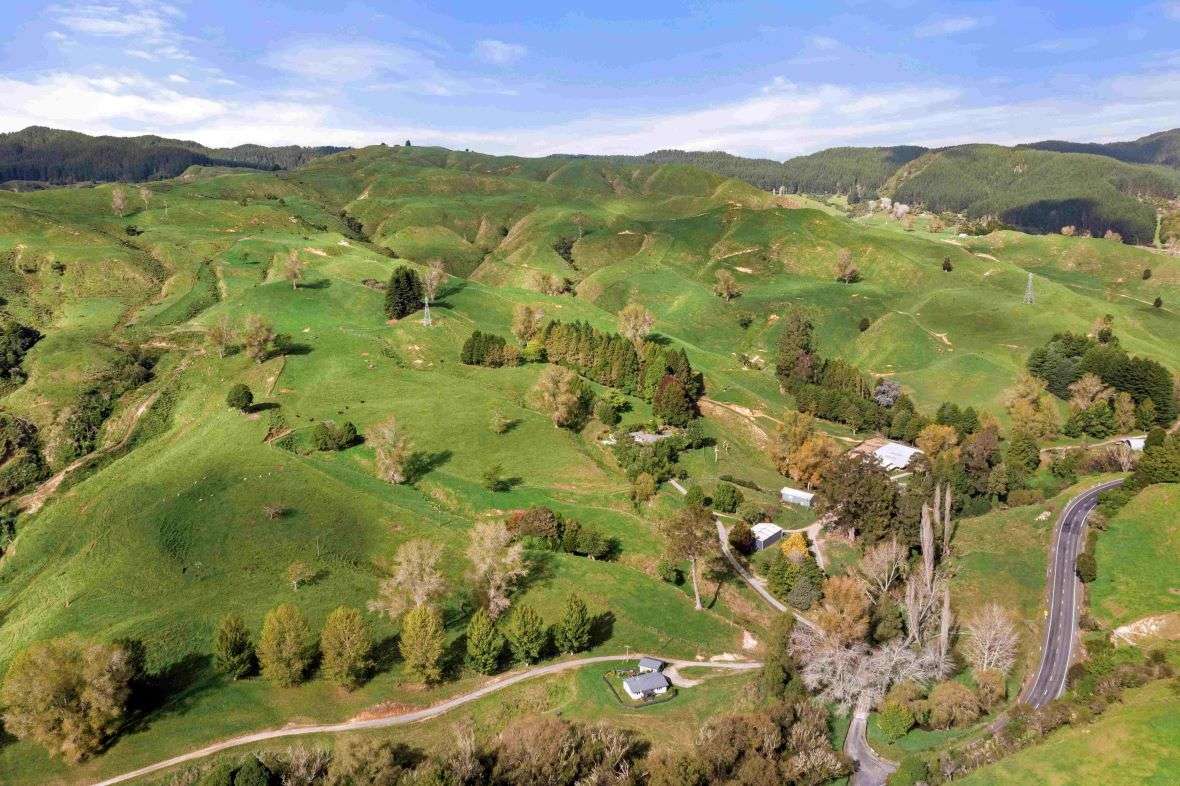
Corriebeg Farm, a quintessential king country breeding and finishing property, is for sale. Photo / Supplied
Start your property search
North Island sheep and beef
While in the upper North Island listed drystock properties have been scarce, further south the market for sheep and beef farms is more active. In some regions, after a few years of activity, including sales of farmland to forestry, the cycle of farmers selling up to retire has ebbed. In others, encouraged by a productive season, more favourable interest and exchange rates, and better commodity prices, farmers have been motivated to buy land.
These factors are likely to eventually play out more widely across the North Island, though possibly not until spring. Before moving into the market, farmers need first to further solidify their finances.
A recent market highlight was the sale of one of Central Hawke’s Bay’s most admired farms, 545-hectare Ashley Clinton property Middle Hills. Owned by Rural Equities Ltd since the 1980s, this immaculately presented, well-located, large-scale and productive operation attracted plenty of attention before selling to a local businessperson with strong farming interests.
As the autumn progresses, due to the shortage of listings, any good quality North Island sheep and beef farms listed for sale are likely to be welcomed by enthusiastic and adequately resourced purchasers.
Corriebeg Farm, on State Highway 4, in Te Kuiti, has an asking price of $7 million.
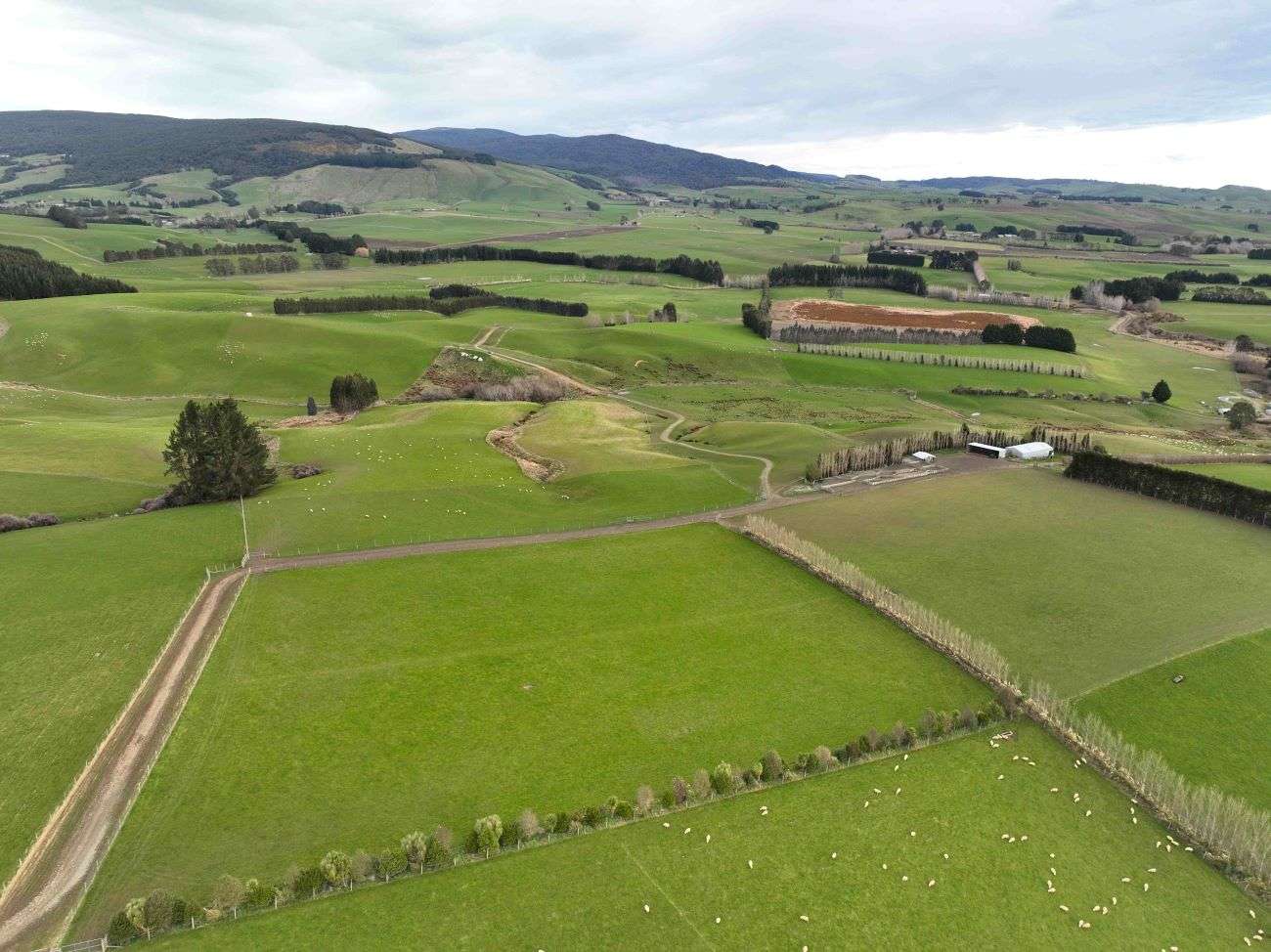
154 Fenham Road, Merrivale, is a 265-hectare property for sale in Southland. Photo / Supplied
South Island sheep and beef
After a long period of low morale, in recent months several factors have combined to encourage increased optimism among farmers. These include the dropping OCR, steadily lifting ewe and cattle prices, the perception of greater government support for agriculture, and favourable climatic conditions.
Since farmers generally prefer to have banked their returns before they start investing, the South Island marketing for sheep and beef property has been subdued, aside from a few notable spring sales, and signs for the autumn are positive.
Notable recent sales include 2337-hectare Waiau, Amuri District property Cheddar Valley Station, which sold consistent with recent values on a per stock unit basis; and 1181-hectare Moa Flat, West Otago property Elgin. Several others have also sold, subject to conditions that should be achieved in the near future.
Into the autumn, a variety of properties are set to become available providing purchasers with plenty of choice. Those of higher quality should meet ready demand. Among these Dunvegan, comprising 1507 hectares in Kuriwao, South Otago, will attract particular attention.
154 Fenham Road has an asking price of $3.4m.
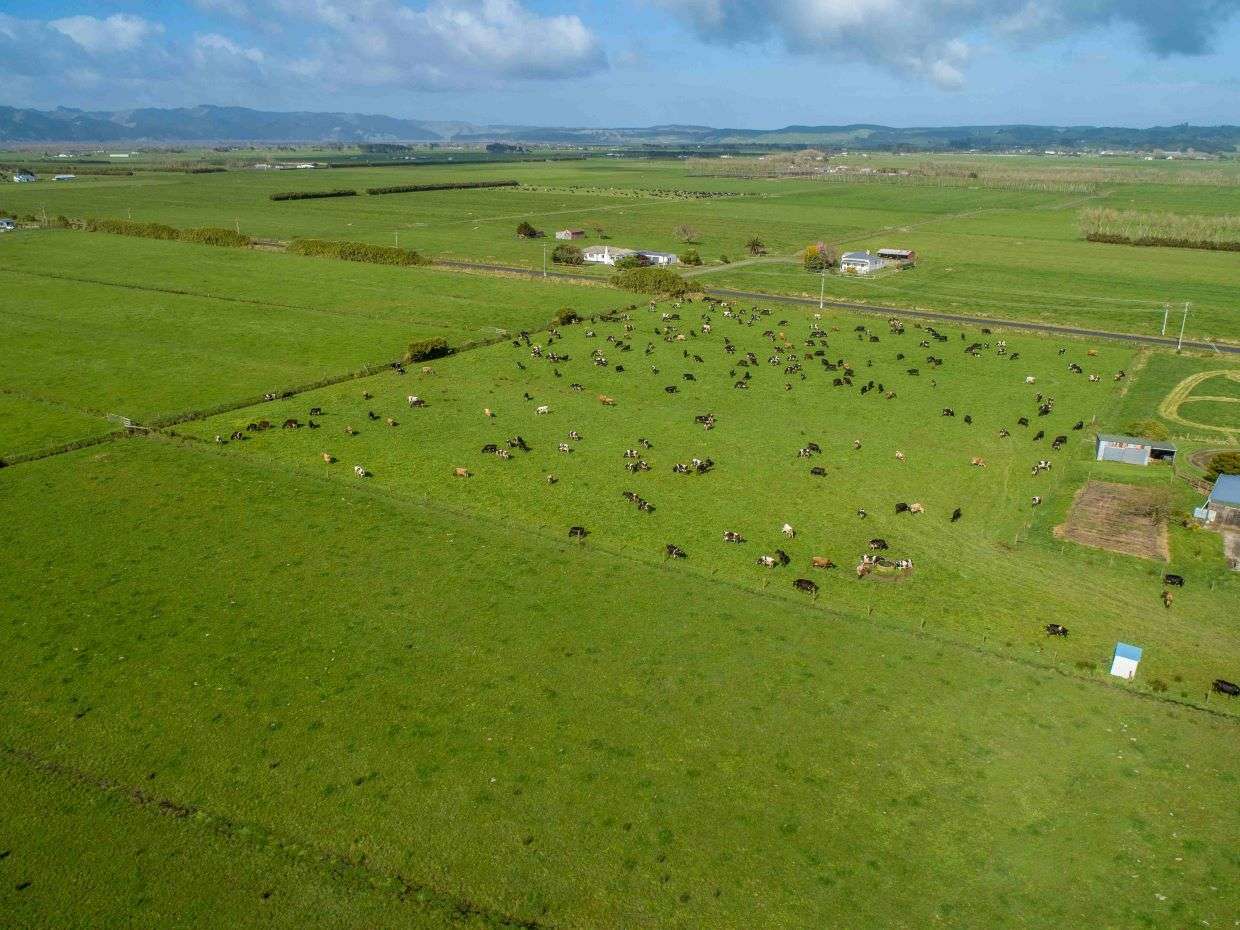
158 Otaua Road, in Aka Aka, is a 215ha dairy farming property for sale in the Waikato region. Photo / Supplied
North Island dairy
North Island dairy farmers are enjoying the higher payout forecast. In contrast to two years ago, when at this point many had reduced to milking just once a day, now they are seeking to maximise returns by prolonging the season and producing as much milk as possible.
Properties offered have sold readily, especially prior to Christmas, when most of the farms that were listed found buyers, albeit at slightly softer values than last season.
Into the New Year, new listings have reduced. Farmers otherwise considering selling are now delaying their plans, opting instead to stay on and chase the elevated payout. Drought conditions in eastern Waikato might also diminish the number of properties coming to the market.
Motivated buyers from all walks of life, including investors, are showing interest. They are looking for environmentally-compliant, turnkey operations, and are unwilling to enter into the unknown, generally undertaking a comprehensive appraisal of a property’s potential before submitting an unconditional offer, rather than making the offer subject to due diligence.
Notable recent Waikato sales include a 126-hectare Ngarua farm for $9.2 million, and a 130 hectare-Tahuna property for $7.82m.
Through autumn the shortage of listings should result in values holding, or possibly even strengthening.
158 Otaua Road is for sale by negotiation.

Dale Dairies, a 379ha quality Northern Southland dairy farm, is for sale. Photo / Supplied
South Island dairy
In each of the South Island’s dairy regions demand for farms is strong, particularly well-located properties with competitively priced, reliable irrigation. Values are rising. However, with many electing to continue farming and bank this season’s healthy profits, the market lacks the supply of listings it requires, especially in the 500 to 1000 cow range. Once the payout eventuates and farmers have cash to spend, some potential vendors may be more willing to sell.
Some established sheep and beef farmers seeking to diversify their holdings are also in the market for dairy farms, as are increasing numbers of first farm buyers.
Recent sales of note, illustrating the sector’s confidence, include multiple mid-Canterbury farms easily exceeding $60,000 per hectare, a new benchmark after several years of values well beneath this level. Meanwhile a 230-hectare Balfour farm sold for $36,000 per hectare, while other Southland farms are commanding up to $45,000 per hectare.
In Canterbury, Warrenlea, a 188-hectare Waimakariri irrigated dairy support property offered for sale is likely to gain attention from motivated dairy farmers looking to consolidate. Although traditionally dairy farmers do not financially benefit from owning their dairy support, the sector’s upswing may encourage some to buy such properties, therefore improving control of their operations.
Dale Dairies at 20 Longridge Village Road in Kingston Crossing is seeking enquiries over $12.99m.

A 57ha large scale vineyard for sale in Marlborough. Photo / Supplied
Viticulture
Despite the fact that this year’s grape harvest is forecast to be excellent, as an oversupply in recent seasons has created an excess of unsold wine, yield caps will be rigidly enforced. In addition, pricing on new season supply contracts looks likely to be around 20% down on recent years.
These factors are combining to create uncertainty in the sector, leaving anyone considering buying or selling viticulture land on hold, a hiatus that is unlikely to end this season. Sales are scarce and prevailing land values have not been tested for some time.
Many growers intending to plant vines on Marlborough’s remaining pastoral land have put those plans on hold. Instead, current development activity is focused on redeveloping existing older vineyards, planting new vines on established viticulture land, including replacing alternative varieties with the Sauvignon Blanc vines the region is renowned for.
Revisions to overseas investment regulations, signalled by the government and expected to be announced over the next few months, could benefit the viticulture market. Currently almost one-third of Marlborough vineyards are owned by entities based overseas, who provide money, knowledge, and international recognition, stimulating development and innovation. More permissive Overseas Investment Office regulations could increase the overseas ownership of Marlborough vineyards.
The 57ha vineyard for sale in Marlborough is priced by negotiation.

Napoli orchard, a 5.19 canopy hectare of licensed Gold G3 kiwifruit in Te Puke is for sale. Photo / Supplied
Kiwifruit
Since the value of kiwifruit property fell away from the record levels reached between 2020 and 2022, when the most productive gold kiwifruit orchards sold at or above $2m per canopy hectare, the market has been constrained.
Current values are linked to orchard gate returns, with transactions reported around $1.4m per canopy hectare, though may rise closer to $1.7m per canopy hectare later this year, including fruit on the vine. Green kiwifruit blocks suitable for conversion to gold are in demand, selling at around $500,000 per canopy hectare.
Changes to the Zespri G3 licence auction format this year should result in more orchards changing hands through the autumn.
A series of orchards in corporate hands may list for autumn sale. If so, they will provide an indicator of market enthusiasm. Strong demand remains for orchards larger than eight hectares and major banks are actively supporting their higher value orchardist clients. Several industry operators are in the market for high quality production blocks. Any property with optimum yield and location should sell well over the next few months.
Napoli orchard is for sale by deadline, closing March 28.
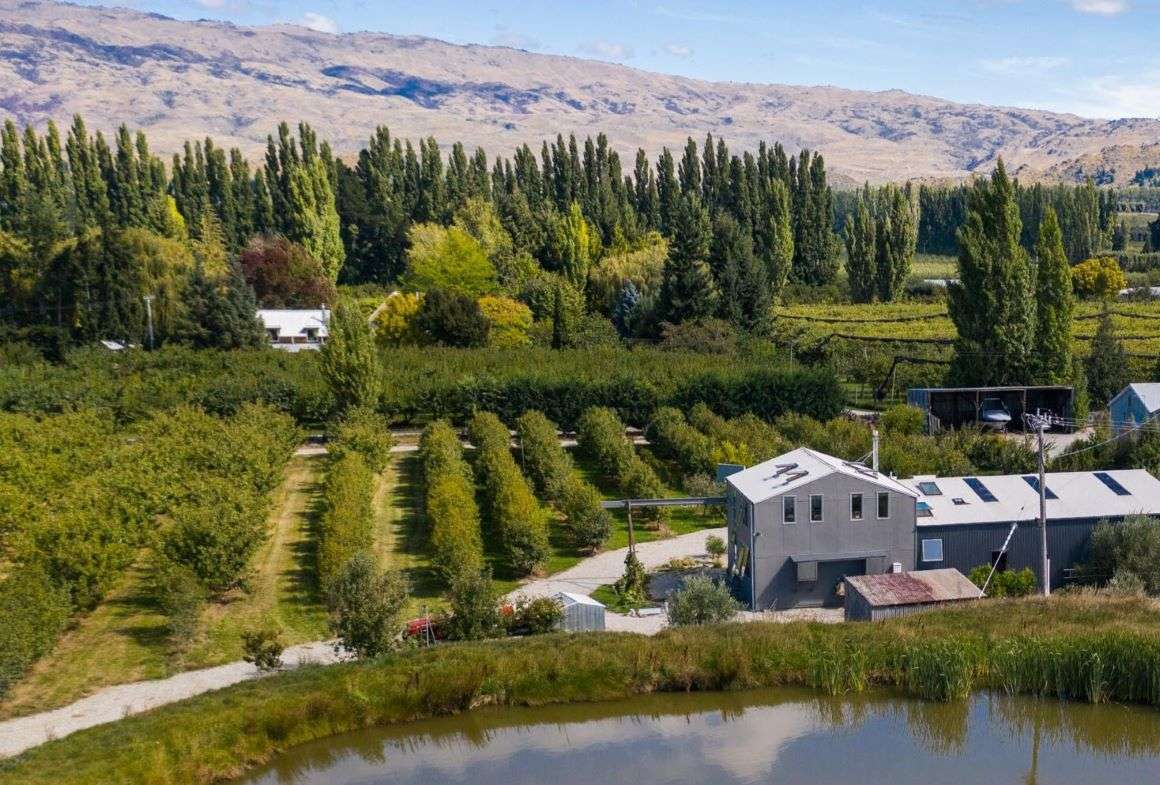
A great opportunity to lease a cherry orchard in Otago. Photo / Supplied
Pipfruit and stonefruit
After several challenging years for the pipfruit and stonefruit sectors, where poor weather during critical pollination and cell division periods, Cyclone Gabrielle, and disruption of the RSE scheme due to the Covid lockdown significantly affected productivity, respite is on the horizon for growers.
This season is much more promising, heading towards a harvest featuring clean fruit that should pack out well. Good production of high quality product is in prospect.
Exporters indicating New Zealand apples will meet high demand and elevated prices in international markets this year is further boosting sector optimism.
These positive factors are likely to impact the pipfruit and stonefruit orchard market, though with the current focus primarily on the harvest, that is unlikely to commence until later in the autumn.
The cherry orchard at 13 Blackman Road in Earnscleugh, Otago is for sale by negotiation.
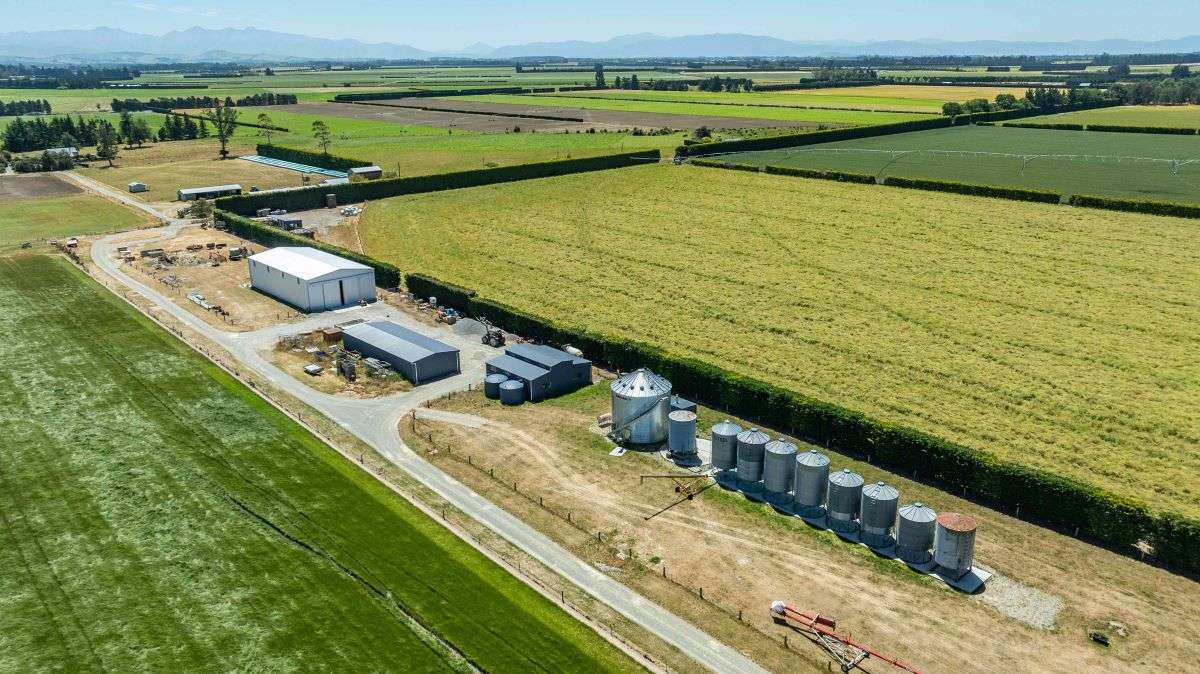
An intensive 122ha cropping property for sale in Charing Cross. Photo / Supplied
Cropping
In the past 12 months, with arable farmers under price pressure and facing diminishing returns, the property market in their sector has been challenging, with only a small number of cropping properties changing hands.
As it is, these farms tend to be tightly held within a limited number of farming entities.
Weaker grain prices hamstring potential returns, and limit banks from supporting arable initiatives, leaving expansion constrained to larger more established operators. When underpinned by strong neighbours and multiple land use options, particularly when these can be integrated with existing operations, strong sales of top quality farms have occurred.
Two adjoining mid-Canterbury properties, comprising 426 hectares and farmed as a single large-scale high quality unit, sold in December. This listing attracted multiple offers, demonstrating the continued market strength of arable properties when appropriately presented and performing well. Two smaller Temuka properties, with quality fertile soils and multiple options, also sold well earlier in 2024.
With the dairy payout rising, and more dairy farmers feeding the likes of barley and wheat to their cows, demand has lifted for grain crops, and the outlook is more positive for cropping farmers, who are also set to benefit from good yields this season.
The Charring Cross cropping property is for sale by negotiation.
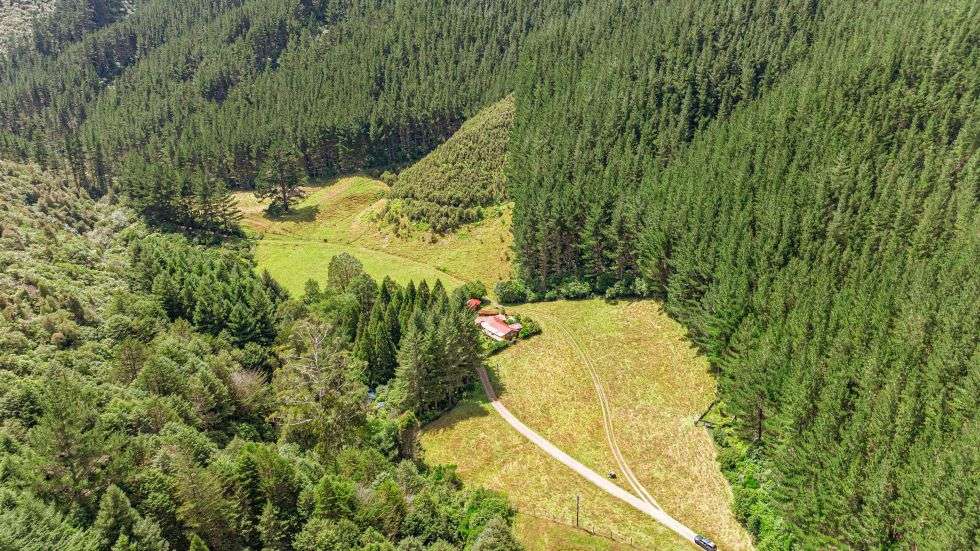
Chilly Brook, a large 366ha farm for sale in the Akatarawa Valley. Photo / Supplied
Forestry
Since the 2023 election and change of government, demand for forestry properties has been subdued. Both the termination of the previous government’s billion trees planting programme and the pre-election change in Overseas Investment Office (OIO) policy constrained conversions from farmland to forestry under foreign ownership.
Where previously applications needed to meet the Special Forest test, to gain consent now they must now pass the Benefit to New Zealand test. The Special Forest test still applies to the sale of forests.
In the 15 months since the election, the market for forests and forestry land has been slow. Some private sales have taken place, mainly to New Zealand nationals and private buyers, with land values ranging from $7000 to $9000 per hectare.
In December the government’s forestry investment policy was announced, aiming to limit conversions of farmland to forestry. Measures include a moratorium on exotic forestry registrations on more productive and actively farmed land, a limit on the annual quantity of less productive farm land able to be planted in exotic forestry; and enabling farmers to plant up to 25.
Chilly Brook is seeking enquiries over $3m.
While each sector is experiencing its own unique market conditions, the overall sentiment across rural property remains positive, with demand for quality listings continuing to strengthen. As we move further into autumn, buyers and sellers alike will be watching market signals closely to make informed decisions.
If you’re considering buying or selling rural property, now is the time to start planning. Contact your local PGG Wrightson Real Estate sales consultant or find an office near you. Our team of specialists is here to provide expert advice and help you navigate the evolving market.

















































































